My
List |
Addition Date
|
Target
|
Mission
|
Instrument
|
Size
|

|
2024-10-11 |
Europa
|
Hubble Space Telescope
|
Hubble Space Telescope
|
3840x2160x3 |
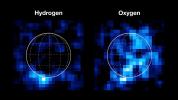
|
-
PIA26462:
-
Hubble's Ultraviolet Observations Reveal Hydrogen and Oxygen at Europa
Full Resolution:
TIFF
(8.013 MB)
JPEG
(325.8 kB)
|

|
2021-08-04 |
|
Hubble Space Telescope
Spitzer Space Telescope
|
Hubble Space Telescope
Spitzer Space Telescope
|
1780x1001x3 |
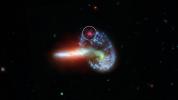
|
-
PIA24575:
-
Hidden Supernova Spotted by Spitzer
Full Resolution:
TIFF
(2.522 MB)
JPEG
(128.6 kB)
|

|
2020-01-08 |
|
Hubble Space Telescope
|
WFC3
|
1920x1280x3 |
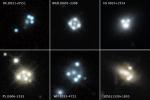
|
-
PIA23410:
-
Quasars' Multiple Images Shed Light on Tiny Dark Matter Clumps
Full Resolution:
TIFF
(3.504 MB)
JPEG
(114.3 kB)
|

|
2019-05-08 |
|
Hubble Space Telescope
Spitzer Space Telescope
|
IRAC
|
1600x900x3 |
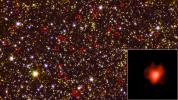
|
-
PIA23123:
-
A Field of Galaxies Seen by Spitzer and Hubble
Full Resolution:
TIFF
(4.124 MB)
JPEG
(245.9 kB)
|

|
2018-12-10 |
|
Hubble Space Telescope
|
|
1074x895x3 |

|
-
PIA22914:
-
Bow Shock Around Young Star
Full Resolution:
TIFF
(2.885 MB)
JPEG
(61.79 kB)
|

|
2018-12-04 |
|
Hubble Space Telescope
|
WFC3
WFPC2
WFPC1
|
1881x627x3 |
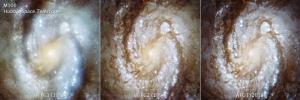
|
-
PIA22913:
-
M100 Through 3 Cameras
Full Resolution:
TIFF
(3.54 MB)
JPEG
(173 kB)
|

|
2018-12-04 |
|
Hubble Space Telescope
|
WFPC2
|
640x350x3 |
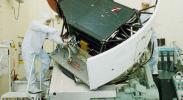
|
-
PIA22912:
-
WFPC2 Testing
Full Resolution:
TIFF
(672.5 kB)
JPEG
(46.03 kB)
|

|
2018-12-04 |
|
Hubble Space Telescope
|
WFPC2
|
1200x675x3 |
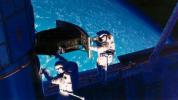
|
-
PIA22911:
-
Installing Hubble's New Camera
Full Resolution:
TIFF
(2.411 MB)
JPEG
(81.1 kB)
|

|
2018-12-04 |
|
Hubble Space Telescope
|
WFPC1
|
1041x660x3 |
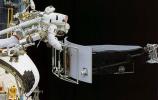
|
-
PIA22574:
-
Making Room for Hubble's New Camera
Full Resolution:
TIFF
(1.568 MB)
JPEG
(83.21 kB)
|

|
2018-08-09 |
|
Hubble Space Telescope
Spitzer Space Telescope
|
|
15556x11667x3 |
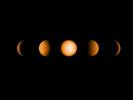
|
-
PIA22565:
-
Ultrahot Jupiter WASP-121b
Full Resolution:
TIFF
(23.61 MB)
JPEG
(3.002 MB)
|

|
2018-06-15 |
|
Hubble Space Telescope
|
|
4763x3126x3 |
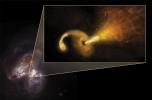
|
-
PIA22356:
-
A Tidal Disruption Event in Arp299B
Full Resolution:
TIFF
(24.23 MB)
JPEG
(946.7 kB)
|

|
2018-01-31 |
|
Hubble Space Telescope
Spitzer Space Telescope
|
|
1608x2048x3 |

|
-
PIA22092:
-
Arp 142: The Penguin and the Egg
Full Resolution:
TIFF
(6.359 MB)
JPEG
(144.5 kB)
|

|
2018-01-11 |
|
Hubble Space Telescope
Spitzer Space Telescope
|
|
2000x1125x3 |
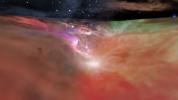
|
-
PIA22089:
-
Visible and Infrared Visualization of the Orion Nebula (Artist's Concept)
Full Resolution:
TIFF
(4.841 MB)
JPEG
(94.93 kB)
|

|
2018-01-11 |
|
Hubble Space Telescope
|
|
1000x750x3 |
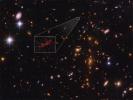
|
-
PIA22079:
-
NASA's Hubble Spots Embryonic Galaxy SPT0615-JD
Full Resolution:
TIFF
(2.083 MB)
JPEG
(107.9 kB)
|

|
2017-07-20 |
Mars
|
Hubble Space Telescope
|
|
3000x2400x3 |
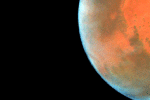
|
-
PIA21837:
-
NASA's Hubble Sees Martian Moon Orbiting the Red Planet

Full Resolution:
TIFF
(7.832 MB)
JPEG
(196.3 kB)
|

|
2017-05-25 |
|
Hubble Space Telescope
|
Hubble Space Telescope
|
1800x1200x3 |
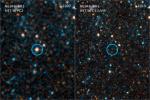
|
-
PIA21467:
-
Massive Star Goes Out With a Whimper Instead of a Bang
Full Resolution:
TIFF
(6.144 MB)
JPEG
(275.2 kB)
|

|
2017-05-25 |
|
Hubble Space Telescope
Spitzer Space Telescope
|
|
1280x720x3 |
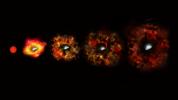
|
-
PIA21466:
-
Massive Star Goes Out With a Whimper Instead of a Bang (Artist's Concept)
Full Resolution:
TIFF
(894.6 kB)
JPEG
(40.32 kB)
|

|
2017-05-10 |
|
Hubble Space Telescope
XMM-Newton
Chandra X-ray Observatory
Spitzer Space Telescope
|
Very Large Array (VLA)
|
1296x1024x3 |

|
-
PIA21474:
-
Crab Nebula from Five Observatories
Full Resolution:
TIFF
(2.823 MB)
JPEG
(119.2 kB)
|

|
2017-04-13 |
Europa
|
Galileo
Hubble Space Telescope
|
|
1235x618x3 |
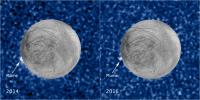
|
-
PIA21443:
-
Hubble Sees Recurring Plume Erupting From Europa
Full Resolution:
TIFF
(1.277 MB)
JPEG
(118.6 kB)
|

|
2016-10-06 |
|
Hubble Space Telescope
|
|
3000x2701x3 |
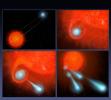
|
-
PIA21071:
-
Cannonballs' Shoot from Star (Artist Concept)
Full Resolution:
TIFF
(14.44 MB)
JPEG
(440 kB)
|

|
2016-06-08 |
|
Hubble Space Telescope
|
|
5120x2880x3 |
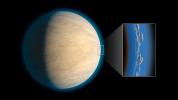
|
-
PIA20687:
-
Hot Jupiter with Hidden Water (Artist Concept)
Full Resolution:
TIFF
(17.9 MB)
JPEG
(389.4 kB)
|

|
2016-02-18 |
|
Hubble Space Telescope
|
|
3600x4500x3 |

|
-
PIA16033:
-
Artist's View of a Super-Jupiter around a Brown Dwarf (2M1207)
Full Resolution:
TIFF
(8.77 MB)
JPEG
(420 kB)
|

|
2016-01-28 |
|
Hubble Space Telescope
|
|
1886x3000x3 |

|
-
PIA16024:
-
Monstrous Cloud Boomerangs Back to Our Galaxy (Artist's Concept)
Full Resolution:
TIFF
(9.49 MB)
JPEG
(601.9 kB)
|

|
2016-01-21 |
|
Hubble Space Telescope
|
Advanced Camera for Surveys
|
3906x3906x3 |
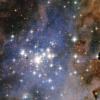
|
-
PIA20468:
-
Hubble Unveils a Tapestry of Dazzling Diamond-Like Stars
Full Resolution:
TIFF
(45.79 MB)
JPEG
(1.43 MB)
|

|
2016-01-06 |
|
Hubble Space Telescope
|
WFPC2
|
738x726x3 |

|
-
PIA20294:
-
WFPC2 Image of the Variable Star Eta Carinae
Full Resolution:
TIFF
(1.338 MB)
JPEG
(44.83 kB)
|

|
2016-01-06 |
|
Hubble Space Telescope
Spitzer Space Telescope
|
Hubble Space Telescope
Spitzer Space Telescope
|
3000x1291x1 |
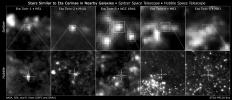
|
-
PIA20018:
-
A Full Panel of Twins
Full Resolution:
TIFF
(2.209 MB)
JPEG
(322.6 kB)
|

|
2015-12-17 |
|
Hubble Space Telescope
|
|
1028x1218x3 |

|
-
PIA16022:
-
Hubble Sees the Force Awakening in a Newborn Star
Full Resolution:
TIFF
(3.517 MB)
JPEG
(85.05 kB)
|

|
2015-12-17 |
|
Hubble Space Telescope
NuSTAR
|
|
2948x2321x3 |
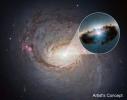
|
-
PIA20058:
-
Hidden Lair at the Heart of Galaxy NGC 1068
Full Resolution:
TIFF
(20.54 MB)
JPEG
(870.1 kB)
|

|
2015-12-17 |
|
Hubble Space Telescope
NuSTAR
|
|
2888x2880x3 |
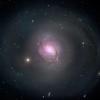
|
-
PIA20057:
-
NuSTAR's View of Galaxy NGC 1068
Full Resolution:
TIFF
(18.53 MB)
JPEG
(305.8 kB)
|

|
2015-12-14 |
|
Hubble Space Telescope
Spitzer Space Telescope
|
|
6000x3663x3 |
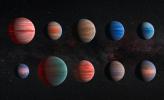
|
-
PIA20056:
-
Artist's Impression of "Hot Jupiter" Exoplanets
Full Resolution:
TIFF
(47.71 MB)
JPEG
(3.259 MB)
|

|
2015-12-03 |
|
Hubble Space Telescope
Spitzer Space Telescope
|
WFC3
|
4169x4633x3 |

|
-
PIA20054:
-
Faint Compact Galaxy in the Early Universe
Full Resolution:
TIFF
(53.34 MB)
JPEG
(2.758 MB)
|

|
2015-10-13 |
Jupiter
|
Hubble Space Telescope
|
WFPC3
|
1798x446x3 |

|
-
PIA19659:
Jupiter Wave
Full Resolution:
TIFF
(2.407 MB)
JPEG
(52.69 kB)
|

|
2015-10-13 |
Jupiter
|
Hubble Space Telescope
|
WFPC3
|
900x536x3 |
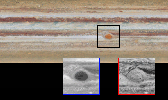
|
-
PIA19648:
-
New Changes in Jupiter's Great Red Spot

Full Resolution:
TIFF
(859.4 kB)
JPEG
(55.46 kB)
|

|
2015-10-13 |
Jupiter
|
Hubble Space Telescope
|
WFPC3
|
3600x1596x3 |
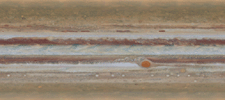
|
-
PIA19643:
-
Spinning Jupiter and Global Map

Full Resolution:
TIFF
(13.13 MB)
JPEG
(328.6 kB)
|

|
2015-09-10 |
|
Hubble Space Telescope
Spitzer Space Telescope
|
|
2200x2201x3 |
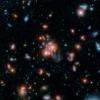
|
-
PIA19837:
-
What Feeds the Beast in a Galaxy Cluster?
Full Resolution:
TIFF
(10.61 MB)
JPEG
(430.2 kB)
|

|
2015-02-10 |
|
Hubble Space Telescope
|
WFPC2
|
758x748x3 |
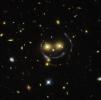
|
-
PIA18794:
-
Smile, and the Universe Smiles With You
Full Resolution:
TIFF
(1.702 MB)
JPEG
(37.58 kB)
|

|
2015-01-08 |
|
Hubble Space Telescope
NuSTAR
|
|
9000x3000x3 |
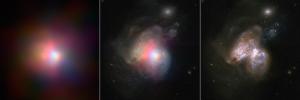
|
-
PIA18907:
-
Tale of Two Black Holes
Full Resolution:
TIFF
(81.02 MB)
JPEG
(3.67 MB)
|

|
2014-11-06 |
|
CIBER
Hubble Space Telescope
Spitzer Space Telescope
|
|
4000x2000x3 |
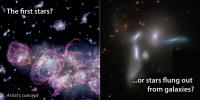
|
-
PIA18851:
-
First Stars or Stray Stars? A Cosmic Infrared Mystery
Full Resolution:
TIFF
(24.01 MB)
JPEG
(840.9 kB)
|

|
2014-10-23 |
Mars
|
Hubble Space Telescope
|
WFPC2
|
1167x876x3 |
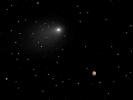
|
-
PIA17802:
-
Close Encounters: Comet Siding Spring Seen Next to Mars (Synthesized Image)
Full Resolution:
TIFF
(3.068 MB)
JPEG
(43.77 kB)
|

|
2014-09-24 |
|
Hubble Space Telescope
Kepler
Spitzer Space Telescope
|
|
1893x1125x3 |
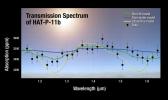
|
-
PIA18839:
-
Transmission Spectrum of HAT-P-11b
Full Resolution:
TIFF
(6.391 MB)
JPEG
(139.1 kB)
|

|
2014-09-24 |
|
Hubble Space Telescope
Kepler
Spitzer Space Telescope
|
|
4200x2400x3 |
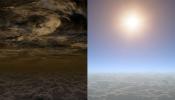
|
-
PIA18838:
-
A Sunny Outlook for 'Weather' on Exoplanets (Artist's Concept)
Full Resolution:
TIFF
(30.26 MB)
JPEG
(473.5 kB)
|

|
2014-09-24 |
|
Hubble Space Telescope
Spitzer Space Telescope
|
|
4124x2320x3 |
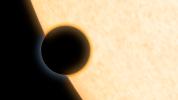
|
-
PIA18837:
-
Seeing Starlight Through a Planet's Rim (Artist's Concept)
Full Resolution:
TIFF
(28.72 MB)
JPEG
(324.8 kB)
|

|
2014-09-19 |
|
Hubble Space Telescope
|
WFPC2
|
1280x686x3 |
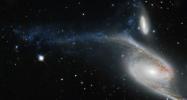
|
-
PIA17808:
-
Hubble Feathers the Peacock
Full Resolution:
TIFF
(2.635 MB)
JPEG
(101.2 kB)
|

|
2014-08-27 |
|
Hubble Space Telescope
Spitzer Space Telescope
|
|
3000x2000x3 |
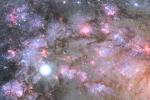
|
-
PIA18471:
-
A Cauldron of Star Birth in the Center of a Young Galaxy (Artist's Concept)
Full Resolution:
TIFF
(18.01 MB)
JPEG
(1.482 MB)
|

|
2014-07-02 |
|
Chandra X-ray Observatory
Hubble Space Telescope
Spitzer Space Telescope
Very Large Array (VLA)
|
|
3600x2812x3 |

|
-
PIA18461:
-
Galactic Pyrotechnics on Display
Full Resolution:
TIFF
(30.38 MB)
JPEG
(1.396 MB)
|

|
2014-04-29 |
|
Herschel Space Observatory
Hubble Space Telescope
|
HIFI
WFC3
|
1000x712x3 |

|
-
PIA18004:
-
Smeared and Magnified Galaxy
Full Resolution:
TIFF
(2.137 MB)
JPEG
(93.48 kB)
|

|
2014-04-14 |
|
Hubble Space Telescope
|
Hubble Space Telescope
|
1280x824x3 |

|
-
PIA18168:
-
The Tadpole and the Wriggler
Full Resolution:
TIFF
(3.165 MB)
JPEG
(102.6 kB)
|

|
2014-04-02 |
Helix Nebula
|
Hubble Space Telescope
|
Hubble Space Telescope
|
16000x16000x3 |
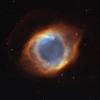
|
-
PIA18164:
-
Iridescent Glory of Nearby Helix Nebula
Full Resolution:
TIFF
(768.1 MB)
JPEG
(27.72 MB)
|

|
2014-02-11 |
Saturn
|
Cassini-Huygens
Hubble Space Telescope
|
Hubble Space Telescope
Visual and Infrared Mapping Spectrometer
|
878x720x3 |
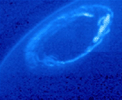
|
-
PIA17900:
-
Dance of Saturn's Auroras

Full Resolution:
TIFF
(1.897 MB)
JPEG
(40.28 kB)
|

|
2014-02-07 |
|
Hubble Space Telescope
Spitzer Space Telescope
|
|
2416x1080x3 |
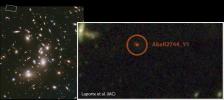
|
-
PIA17837:
-
Pushing the Limits of the Observable Universe
Full Resolution:
TIFF
(7.831 MB)
JPEG
(227.1 kB)
|

|
2014-01-30 |
|
Hubble Space Telescope
|
WFPC2
|
1005x1005x3 |
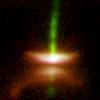
|
-
PIA17835:
-
Dark Disks Around Young Stars
Full Resolution:
TIFF
(3.031 MB)
JPEG
(56.86 kB)
|

|
2014-01-07 |
|
Hubble Space Telescope
|
Hubble Space Telescope
|
1148x1280x3 |

|
-
PIA17569:
-
Hubble Frontier Field Abell 2744
Full Resolution:
TIFF
(4.41 MB)
JPEG
(105.4 kB)
|

|
2014-01-07 |
|
Hubble Space Telescope
|
Hubble Space Telescope
|
1280x983x3 |

|
-
PIA17568:
-
Distant Galaxies in Goods North
Full Resolution:
TIFF
(3.776 MB)
JPEG
(240.3 kB)
|

|
2013-12-12 |
|
Herschel Space Observatory
Hubble Space Telescope
|
PACS
WFPC2
|
3864x3864x3 |
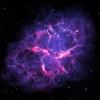
|
-
PIA17563:
-
Crab Nebula, as Seen by Herschel and Hubble
Full Resolution:
TIFF
(44.81 MB)
JPEG
(1.205 MB)
|

|
2013-12-12 |
Europa
|
Galileo
Hubble Space Telescope
Voyager
|
|
1045x1045x3 |
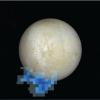
|
-
PIA17660:
-
Water Vapor Over Europa
Full Resolution:
TIFF
(3.278 MB)
JPEG
(64.1 kB)
|

|
2013-12-12 |
Europa
|
Hubble Space Telescope
|
|
2550x3300x3 |

|
-
PIA17659:
-
Artist's Concept of Europa Water Vapor Plume
Full Resolution:
TIFF
(25.25 MB)
JPEG
(814.6 kB)
|

|
2013-11-26 |
|
Hubble Space Telescope
|
|
660x308x3 |
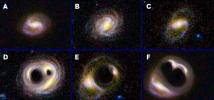
|
-
PIA17559:
-
Warped Galaxies Quiz
Full Resolution:
TIFF
(610.3 kB)
JPEG
(35.18 kB)
|

|
2013-11-21 |
|
Spitzer Space Telescope
Hubble Space Telescope
Subaru Telescope
|
IRAC
|
960x960x3 |
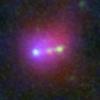
|
-
PIA17558:
-
Three-headed Galactic Blob
Full Resolution:
TIFF
(2.766 MB)
JPEG
(33.67 kB)
|

|
2013-10-25 |
|
Hubble Space Telescope
|
ALMA
Hubble Space Telescope
|
1762x1762x3 |
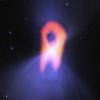
|
-
PIA17551:
-
Ghostly 'Boomerang'
Full Resolution:
TIFF
(9.318 MB)
JPEG
(384.9 kB)
|

|
2013-10-09 |
Comet
|
Hubble Space Telescope
|
|
946x929x3 |
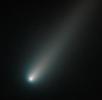
|
-
PIA18153:
-
NASA's Hubble Sees Comet ISON Intact
Full Resolution:
TIFF
(2.638 MB)
JPEG
(82.6 kB)
|

|
2013-09-27 |
Vesta
|
Hubble Space Telescope
|
WFPC2
|
800x525x1 |
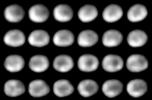
|
-
PIA17467:
-
Asteroid or Mini-Planet? Hubble Maps the Ancient Surface of Vesta
Full Resolution:
TIFF
(420.6 kB)
JPEG
(27.13 kB)
|

|
2013-09-27 |
Vesta
|
Dawn
Hubble Space Telescope
|
Framing Camera
Hubble Space Telescope
|
683x807x3 |

|
-
PIA17466:
-
Comparing Vesta's Topography
Full Resolution:
TIFF
(1.654 MB)
JPEG
(75.48 kB)
|

|
2013-09-27 |
Vesta
|
Dawn
Hubble Space Telescope
|
Framing Camera
Hubble Space Telescope
|
1008x958x1 |
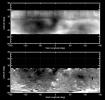
|
-
PIA17465:
-
Two Views of Vesta Bright and Dark
Full Resolution:
TIFF
(966.8 kB)
JPEG
(89.5 kB)
|

|
2013-07-02 |
ISON
|
Hubble Space Telescope
|
|
1008x935x3 |
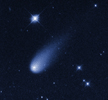
|
-
PIA17483:
-
Comet ISON Brings Holiday Fireworks

Full Resolution:
TIFF
(945.2 kB)
JPEG
(115.3 kB)
|

|
2013-04-23 |
Jupiter
|
Hubble Space Telescope
|
Hubble Space Telescope
|
1536x2048x3 |

|
-
PIA17007:
-
Comet Shoemaker-Levy 9 Approaching Jupiter in 1994
Full Resolution:
TIFF
(9.441 MB)
JPEG
(79.26 kB)
|

|
2013-04-23 |
|
Hubble Space Telescope
Wide-field Infrared Survey Explorer (WISE)
|
WISE Telescope
|
4095x2842x3 |
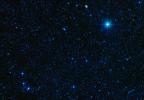
|
-
PIA17005:
-
Galaxy Packs Big Star-Making Punch
Full Resolution:
TIFF
(34.93 MB)
JPEG
(1.316 MB)
|

|
2013-04-19 |
|
Hubble Space Telescope
|
WFC3
|
2704x2826x3 |

|
-
PIA16008:
-
Hubble Sees a Horsehead of a Different Color
Full Resolution:
TIFF
(18.43 MB)
JPEG
(700.1 kB)
|

|
2013-04-03 |
|
Chandra X-ray Observatory
Hubble Space Telescope
Spitzer Space Telescope
|
Chandra X-ray Telescope
IRAC
Visible-Light
|
3600x3600x3 |
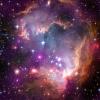
|
-
PIA16884:
-
Taken Under the 'Wing' of the Small Magellanic Cloud
Full Resolution:
TIFF
(38.89 MB)
JPEG
(1.685 MB)
|

|
2013-02-07 |
|
Hubble Space Telescope
Spitzer Space Telescope
|
|
3000x1800x3 |
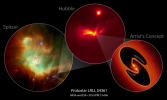
|
-
PIA16690:
-
Protostar LRLL 54361
Full Resolution:
TIFF
(16.21 MB)
JPEG
(290.6 kB)
|

|
2013-01-08 |
|
Hubble Space Telescope
Spitzer Space Telescope
|
|
3300x2550x3 |
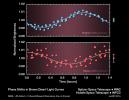
|
-
PIA16612:
-
Probing Brown Dwarf Layers
Full Resolution:
TIFF
(25.26 MB)
JPEG
(422.8 kB)
|

|
2013-01-08 |
|
Hubble Space Telescope
Spitzer Space Telescope
|
|
4268x2400x3 |
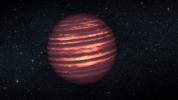
|
-
PIA16609:
-
Forecast for Exotic Weather (Artist Concept)
Full Resolution:
TIFF
(30.75 MB)
JPEG
(803.7 kB)
|

|
2013-01-08 |
|
Hubble Space Telescope
Spitzer Space Telescope
|
|
4268x2400x3 |
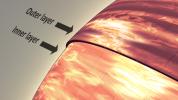
|
-
PIA16608:
-
Anatomy of Brown Dwarf's Atmosphere (Artist Concept)
Full Resolution:
TIFF
(30.75 MB)
JPEG
(469 kB)
|

|
2012-12-13 |
|
Chandra X-ray Observatory
Hubble Space Telescope
Spitzer Space Telescope
Very Large Space Telescope (VLT)
|
|
3600x3600x3 |

|
-
PIA15806:
-
NGC 3627: Revealing Hidden Black Holes
Full Resolution:
TIFF
(38.89 MB)
JPEG
(646 kB)
|

|
2012-11-15 |
|
Hubble Space Telescope
|
Advanced Camera for Surveys
WFC3
|
1578x1520x3 |
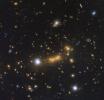
|
-
PIA16465:
-
Astronomers Spot Most Distant Known Galaxy
Full Resolution:
TIFF
(7.198 MB)
JPEG
(305.8 kB)
|

|
2012-06-26 |
|
Hubble Space Telescope
|
Advanced Camera for Surveys
WFC3
|
1485x1045x3 |
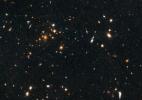
|
-
PIA15803:
-
Galaxy Cluster and Giant Arc
Full Resolution:
TIFF
(4.657 MB)
JPEG
(195.2 kB)
|

|
2012-06-19 |
|
Hubble Space Telescope
|
WFC3
|
761x761x3 |
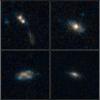
|
-
PIA15831:
-
The Homes of Quasars
Full Resolution:
TIFF
(1.738 MB)
JPEG
(64.82 kB)
|

|
2012-04-17 |
|
Chandra X-ray Observatory
Hubble Space Telescope
Spitzer Space Telescope
|
|
3600x2880x3 |

|
-
PIA14415:
-
A New View of the Tarantula Nebula
Full Resolution:
TIFF
(31.1 MB)
JPEG
(1.774 MB)
|

|
2012-03-16 |
|
Hubble Space Telescope
|
WFC3
|
1057x528x3 |
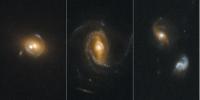
|
-
PIA15418:
-
Quasar Lenses
Full Resolution:
TIFF
(1.677 MB)
JPEG
(61.94 kB)
|

|
2011-12-21 |
|
Hubble Space Telescope
Spitzer Space Telescope
|
Hubble Space Telescope
Spizter Space Telescope
|
1200x998x3 |
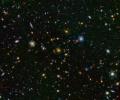
|
-
PIA15251:
-
Distant Galaxy Bursts with Stars
Full Resolution:
TIFF
(3.597 MB)
JPEG
(146.2 kB)
|

|
2010-11-19 |
|
Hubble Space Telescope
Spitzer Space Telescope
|
IRAC
|
1800x1800x3 |
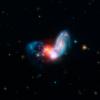
|
-
PIA13632:
-
Shrouded Starburst
Full Resolution:
TIFF
(9.735 MB)
JPEG
(195.5 kB)
|

|
2010-11-11 |
|
Hubble Space Telescope
|
Advanced Camera for Surveys
|
1249x1280x3 |

|
-
PIA13616:
-
Shedding 'Bent' Light on Dark Matter
Full Resolution:
TIFF
(4.802 MB)
JPEG
(132.9 kB)
|

|
2010-10-08 |
Vesta
|
Dawn
Hubble Space Telescope
|
WFC3
|
2301x2295x3 |

|
-
PIA13428:
-
The Faces of Vesta
Full Resolution:
TIFF
(15.86 MB)
JPEG
(156.3 kB)
|

|
2010-10-08 |
Vesta
|
Dawn
Hubble Space Telescope
|
WFC3
|
1280x719x3 |
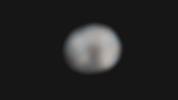
|
-
PIA13427:
-
A New Spin on Vesta
Full Resolution:
TIFF
(2.764 MB)
JPEG
(19.14 kB)
|

|
2010-08-19 |
|
Hubble Space Telescope
|
Advanced Camera for Surveys
|
3853x3902x3 |

|
-
PIA13339:
-
Fun House Mirror in Space
Full Resolution:
TIFF
(45.1 MB)
JPEG
(1.367 MB)
|

|
2010-08-11 |
|
Galaxy Evolution Explorer (GALEX)
Hubble Space Telescope
|
Ultraviolet/Visible Camera
|
2400x1600x3 |
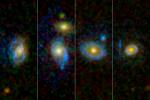
|
-
PIA13318:
-
Ultraviolet Ring Around the Galaxies
Full Resolution:
TIFF
(11.53 MB)
JPEG
(192.2 kB)
|

|
2010-07-22 |
|
Hubble Space Telescope
Spitzer Space Telescope
|
|
3000x2400x3 |
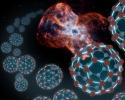
|
-
PIA13288:
-
Space Balls (Artist's Concept)
Full Resolution:
TIFF
(21.6 MB)
JPEG
(422 kB)
|

|
2010-04-22 |
|
Hubble Space Telescope
|
WFC3
|
2104x1937x3 |
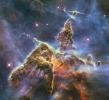
|
-
PIA15985:
-
Hubble Captures View of 'Mystic Mountain'
Full Resolution:
TIFF
(12.23 MB)
JPEG
(530.5 kB)
|

|
2010-03-16 |
Jupiter
|
Hubble Space Telescope
Spitzer Space Telescope
Very Large Space Telescope (VLT)
|
Hubble Space Telescope
VLT
|
469x566x3 |

|
-
PIA12869:
-
Jupiter's Storms: Temperatures and Cloud Colors
Full Resolution:
TIFF
(797.5 kB)
JPEG
(38.71 kB)
|

|
2010-02-04 |
Pluto
|
Hubble Space Telescope
|
Hubble Space Telescope
|
3000x2400x3 |
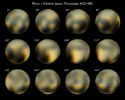
|
-
PIA18179:
-
Hubble Maps of Pluto Show Surface Changes

Full Resolution:
TIFF
(21.61 MB)
JPEG
(265.7 kB)
|

|
2009-11-10 |
|
Chandra X-ray Observatory
Hubble Space Telescope
Spitzer Space Telescope
|
IRAC
|
9725x4862x3 |
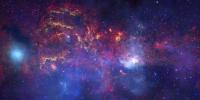
|
-
PIA12348:
-
Great Observatories' Unique Views of the Milky Way
Full Resolution:
TIFF
(141.8 MB)
JPEG
(3.839 MB)
|

|
2009-10-07 |
|
Hubble Space Telescope
Spitzer Space Telescope
|
IRAC
|
387x727x3 |

|
-
PIA12259:
-
Infrared Ring around Saturn
Full Resolution:
TIFF
(845.1 kB)
JPEG
(50.56 kB)
|

|
2009-04-21 |
Pluto
|
Hubble Space Telescope
|
Advanced Camera for Surveys
|
504x504x3 |
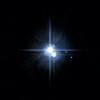
|
-
PIA12453:
-
Pluto and its Moons: Charon, Nix, and Hydra
Full Resolution:
TIFF
(763.1 kB)
JPEG
(12.04 kB)
|

|
2009-02-10 |
Messier 101
|
Hubble Space Telescope
Spitzer Space Telescope
|
Chandra X-ray Telescope
IRAC
Visible Light
|
7200x7200x3 |
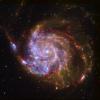
|
-
PIA11797:
-
NASA's Great Observatories Celebrate the International Year of Astronomy
Full Resolution:
TIFF
(155.5 MB)
JPEG
(6.529 MB)
|

|
2009-02-10 |
Messier 101
|
Hubble Space Telescope
Spitzer Space Telescope
|
IRAC
|
7200x7200x3 |
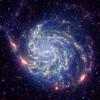
|
-
PIA11796:
-
Spitzer Space Telescope's View of Galaxy Messier 101
Full Resolution:
TIFF
(155.5 MB)
JPEG
(2.86 MB)
|

|
2009-01-07 |
Comet
|
Hubble Space Telescope
|
Advanced Camera for Surveys
|
846x916x3 |

|
-
PIA11749:
-
Stellar Interlopers Caught Speeding Through Space
Full Resolution:
TIFF
(2.327 MB)
JPEG
(146.1 kB)
|

|
2008-08-10 |
|
Hubble Space Telescope
|
WFPC2
|
1502x1482x3 |
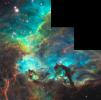
|
-
PIA10957:
-
Hubble Unveils Colorful and Turbulent Star-Birth Region on 100,000th Orbit Milestone
Full Resolution:
TIFF
(6.69 MB)
JPEG
(245.8 kB)
|

|
2008-07-01 |
|
Hubble Space Telescope
|
Advanced Camera for Surveys
WFPC2
|
1280x1188x3 |
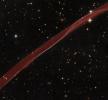
|
-
PIA10926:
-
Hubble Sees Stars and a Stripe in Celestial Fireworks
Full Resolution:
TIFF
(4.567 MB)
JPEG
(158.8 kB)
|

|
2008-04-24 |
|
Hubble Space Telescope
|
WFPC2
|
3038x1580x3 |
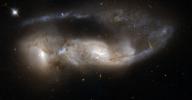
|
-
PIA10393:
-
NGC 6621/2
Full Resolution:
TIFF
(14.4 MB)
JPEG
(509.2 kB)
|

|
2008-04-24 |
|
Hubble Space Telescope
|
WFPC2
|
3481x3481x3 |
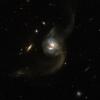
|
-
PIA10392:
-
NGC 6090 - a Pair of Spiral Galaxies
Full Resolution:
TIFF
(36.35 MB)
JPEG
(1.478 MB)
|

|
2008-04-24 |
|
Hubble Space Telescope
|
WFPC2
|
2371x2371x3 |

|
-
PIA10391:
-
Interacting Galaxies
Full Resolution:
TIFF
(16.88 MB)
JPEG
(634.2 kB)
|

 Planetary Data System
Planetary Data System



















































































































